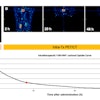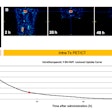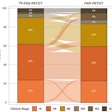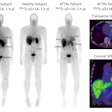New imaging and treatment strategies are emerging to prolong the lives of men with metastatic castration-resistant prostate cancer (mCRPC), according to a presentation at the recent Society of Nuclear Medicine and Molecular Imaging (SNMMI) annual meeting.
For instance, one emerging question is how new radionuclide treatments like lutetium-177 prostate-specific membrane antigen-617 (Lu-177 PSMA-617, Pluvicto) will affect the use of existing ones such as radium-223 dichloride (Ra-223, Xofigo).
“The big question now that’s going to come up is when can you use which one and how would you choose which one of these to use first,” said Katherine Zukotynski, MD, a medical imaging expert at McMaster University in Hamilton, Ontario.
Zukotynski discussed this question and how the treatment paradigm for mCRPC continues to shift in a Bayer-sponsored session at SNMMI 2024 in Toronto.
mCRPC is a type of advanced prostate cancer that has spread to other parts of the body and is no longer responding to hormone treatment that lowers testosterone. There is no cure for the disease, with treatments designed to prolong the lives of patients.
Radionuclides such as Pluvicto and Xofigo represent the most advanced treatments to date. They are cancer cell-targeting molecules injected into the body that travel to tumor sites and release radiation that destroys the DNA of cancer cells.
Current evidence
The best evidence so far on the sequence for these treatments comes from the so-called “RaLu Study,” a medical chart review analysis published in December 2023 in the Journal of Nuclear Medicine. The study aimed to evaluate Lu-177 PSMA-617 safety and efficacy in patients with mCRPC previously treated with Ra-223 dichloride.
In total, the analysis included 133 patients and concluded that Ra-223 dichloride followed by Lu-177 PSMA-617 therapy in heavily pretreated mCRPC patients was clinically feasible, with no indication of impairment of Lu-177 PSMA-617 safety or effectiveness.
“If you decide to use Xofigo first, you can then use Pluvicto. If you decide to use Pluvicto first, you can then use Xofigo. That was really the bottom line of the RaLu trial as I see it,” Zukotynski said.
PET imaging key
Importantly, however, treatment decisions depend on identifying where the cancer has spread, and for this PET imaging using radiotracers that target different sites of metastases is key, Zukotynski said.
For instance, evidence based on PET imaging with radiotracers that bind to prostate-specific membrane antigen (PSMA) on cancer cells suggests that Xofigo is a better choice for patients whose cancer has spread to the bone, Zukotynski said. On the other hand, PET imaging has shown that Pluvicto appears to be the better choice for patients whose cancer has spread to visceral organs such as the lungs, liver, or intestines, she said.
“The bottom line is that if I’m dealing with a gentleman who has primarily bone disease, Xofigo might actually be a very good option and it can be done before or after Pluvicto,” she said.
Also, importantly, PET imaging in the RaLu Study showed that the waiting time for switching between Xofigo and Pluvicto treatments is eight weeks, Zukotynski added.
Expanding field
Ultimately, the field is ever-expanding, Zukotynski said. She noted that in 2004, the entire playing field changed when the chemotherapy medication docetaxel came out, then again in 2013 when Xofigo proved effective, and again when new androgen receptor inhibitors were approved in the late 2000s. Now there’s Pluvicto, she said.
Moreover, clinical trials are underway to test combinations of these treatments and to determine most importantly whether any or all of them can be effective in patients at earlier stages of the disease, she added.
Finally, Zukotynski encouraged a multidisciplinary approach for treating these patients that includes nuclear medicine physicians, medical oncologists, and radiation oncologists, as it takes such a team to ensure effective treatment.
“I can’t emphasize that enough. None of us has the expertise to play this really well alone,” she concluded.



















